Features of Japanese kinusaiga technique
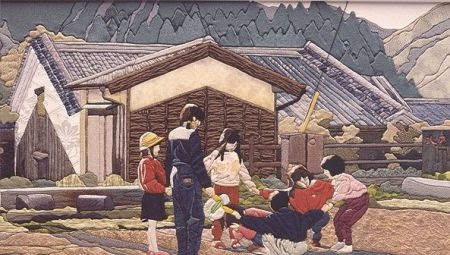
The Japanese are real needlewomen. They practically do not throw away unnecessary things and clothes. Any old material will work fine to create an amazing masterpiece. And you don't have to go far, the silk rags left behind when sewing a kimono are sent to create creative works using the kinusaiga technique.
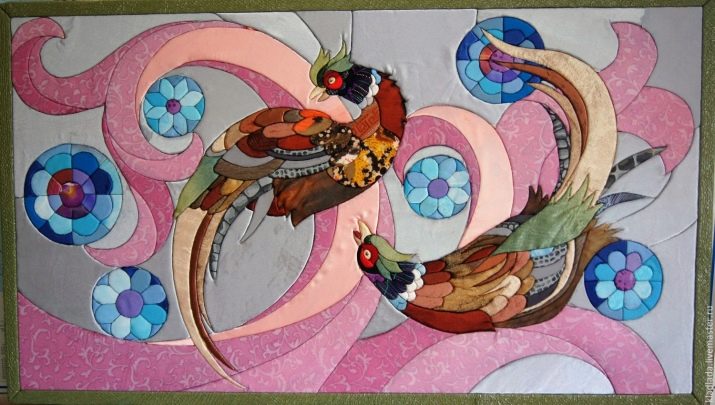


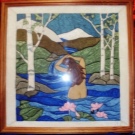
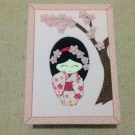

What it is?
Kinusaiga (or Japanese patchwork without using a needle) - a kind of needlework, which is based on drawing up an applique from different pieces of fabric. On a superficial acquaintance, it seems that the kinusaiga technique is a patchwork sewing. However, this opinion is erroneous.
No needles are used to create Japanese patchwork. All that is needed is wooden planks, pieces of fabric, the imagination and patience of the master.


Everyone knows that Japan is a country of inventors. The Japanese were the first to develop unusual devices, come up with high-tech machines and equipment. The same goes for creativity. They can use the most unusual things to create their artistic masterpieces.
The storyline of kinusaiga is based on cityscapes.
Images of nature are extremely rare. Only professional craftsmen are ready to create a forest masterpiece. Streets in this technique are much easier to create. In general, such images seem to be alive. People on street landscapes are done extremely rarely and only from the back. Even modern masters with all the knowledge of the intricacies of kinusaiga do not undertake to portray faces.

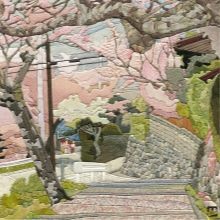
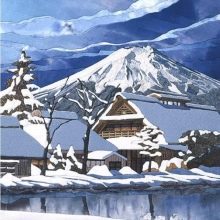
Unfortunately, this type of art is not widespread even in the country of origin. The reason for this is the duration of the creation of masterpieces, especially if the picture is large.And the price of one work is very high, since only natural fabrics are used to create it, and the process of execution itself takes place only by hand. Owners of kinusaiga paintings claim that the fabric landscape resembles a real photograph.
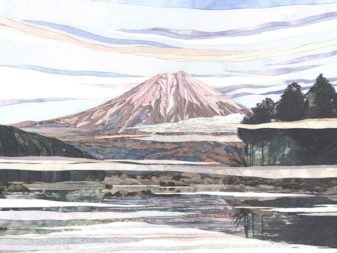
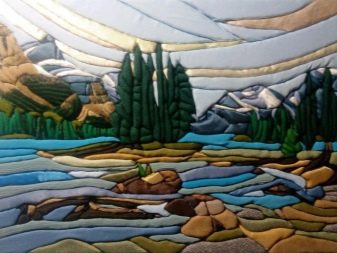
Since the kinusaiga technique became widespread, specialized stores began to open in all cities and countries, where you can purchase tools and materials for creating masterpieces. Sets of cut silk are also exhibited there. Large sets, which include tools, diagrams, patterns, stencils and fabric, are of particular attention to needlewomen. This option is ideal for beginners.
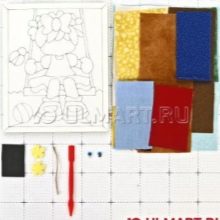
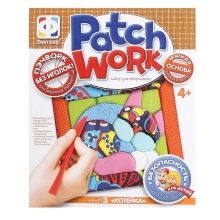

Every year there are more and more kinusaiga specialists. Some consider financial gain, while others are ruled by interest. For the second, the presented technique is a sedative, especially after a hard day's work. In addition, all family members can be involved in creating a masterpiece using the kinusaiga technique. Such joint leisure brings together parents and children.
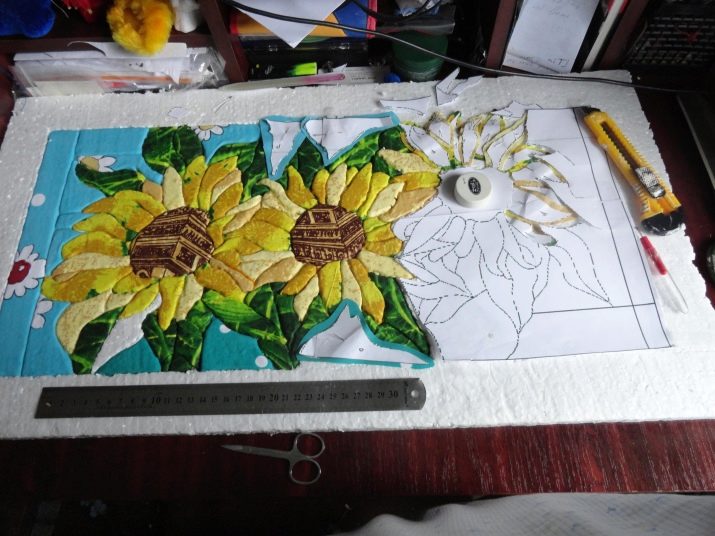
History of origin
The paintings made using the kinusaiga technique resemble the patchwork familiar to all Europeans. Both methods of execution allow you to make an unusual pattern or landscape, the mosaic elements of which differ in color and texture.
The main difference between them is that in the patchwork technique, threads and needles are used to sew the flaps, and kinusaiga does not involve the use of these tools.
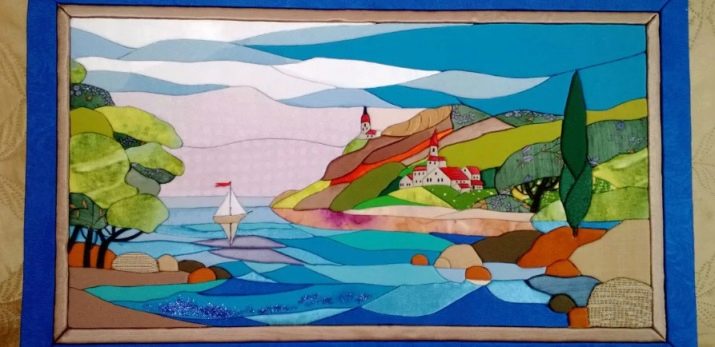
The emergence of the kinusaiga technique was due to the thrifty Japanese housewives. They did not throw away old things, scraps of fabric left when sewing a kimono, but put them in a separate box. These pieces could be used to update worn-out things and accessories, sew clothes for dolls. And in the 80s of the XX century, the Japanese woman Maeno Takashi decided to try to create an unusual work of art from the remains of fabric from a kimono, and she succeeded.
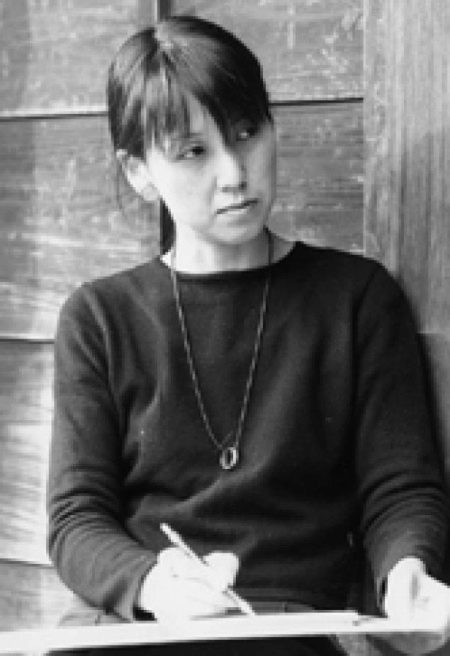
After that, this technique began to gain momentum, and many women decided to try their capabilities in creating such masterpieces.

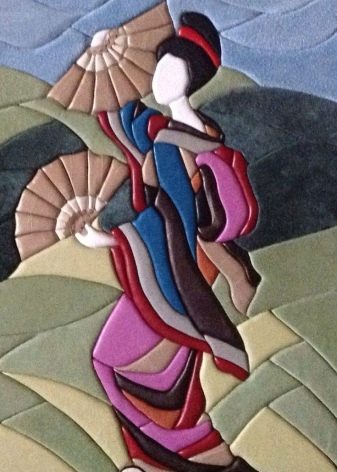
Wooden planks were used as a basis for the painting. Slits were made on them, into which the flaps of fabric were pushed. The craftswomen needed complete silence and calmness, especially in the process of cutting the contour, since they worked with a sharp object and could get injured if they were carelessly moving. Relatives and friends understood this and tried not to touch the needlewoman during work.
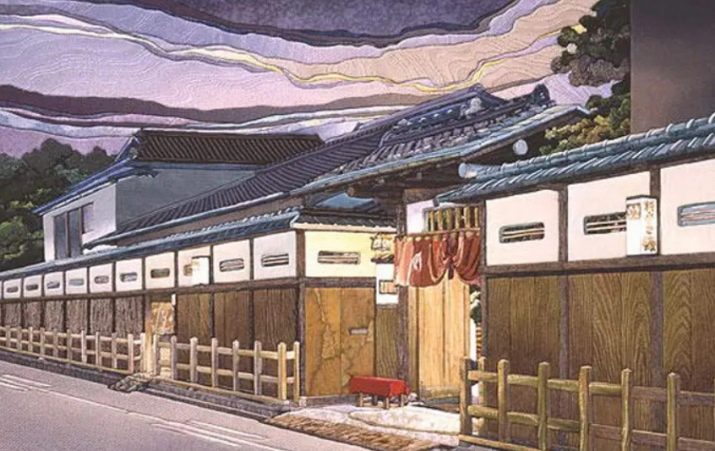
A little later, this technique began to be used by professionals as their main source of income. But, unfortunately, not every person was willing to pay a huge amount for a fabric painting. Gradually, the kinusaiga technique came to Europe, but at the same time it received a slight change. In simple terms, the work was based not on natural silk, but on any other types of fabric. Foam sheets have become an analogue of a wooden board. As a decorative design, the Europeans began to add ribbons, beads, braid.
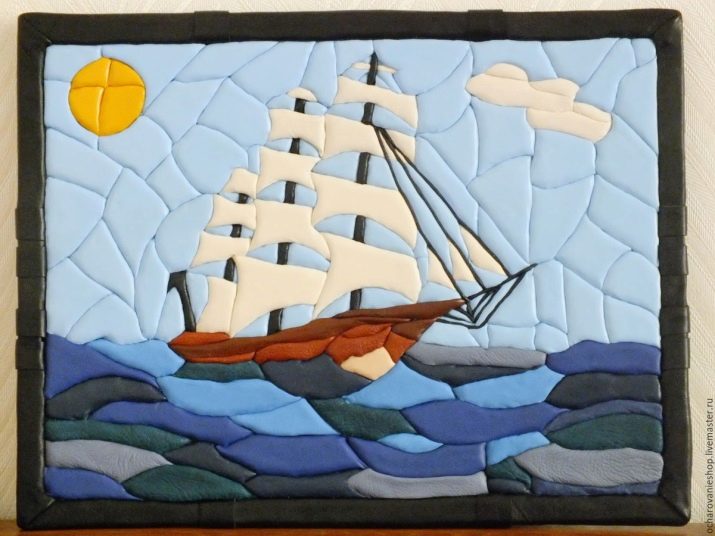
Today, the kinusaiga technique has a lot of followers. Some create simple paintings, while others perform complex masterpieces. Modern works made by real masters easily deceive the eyes of the common man. Perfect paintings have a lot in common with ordinary photographs. Any landscape will do as a storyline, for example, bridges, flowers, a street, nature, mountains. It all depends on the desire of the master.
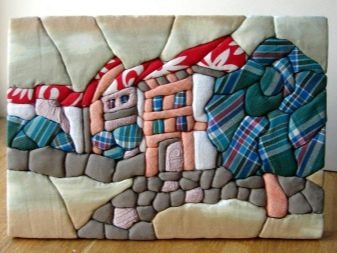
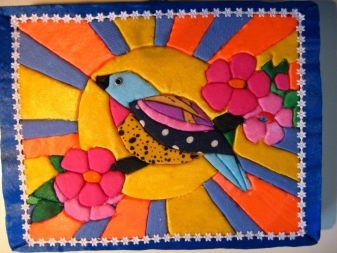
Tools and materials
As a basis, sketches created on paper are used, which are transferred to a wooden plank. Further, it is proposed to familiarize yourself in more detail with the tools and materials that are necessary for working in the kinusayga technique.
- The foundation. The Japanese still use wooden planks for their work, while the Europeans switched to foam sheets.It is much easier to make cuts of the required size in them. The thickness of the foam sheet should be 1-1.5 cm.
- Textile... In the past, the Japanese used natural silk in various colors. However, Europeans use scraps of any fabric, and even leather, to create their masterpieces.
- Decorative elements... In this case, we are talking about satin ribbons, decorative cords, lace, buttons, beads and much more.
- Scissors. It is very important that they are sharp. Otherwise, the cut pieces will fall off. This will have a very negative effect on the beauty of the future masterpiece.
- PVA glue. With the help of an adhesive composition, the fabric is fixed on the base.
- Pencil. A thin marker can be used as an analogue. With its help, a drawing is applied to polystyrene or a wooden board.
- Sewing crayons. With their help, the contour of future flaps on the fabric is made.
- Stationery knife. A scalpel can be used as an analogue. However, work with it with extreme caution, as it is a very sharp instrument and can cut yourself. With a clerical knife, it will be much more difficult to cut the outline on a wooden plank. However, a sharp blade can handle the styrofoam without difficulty.
- Carbon copy.
- Wood stack, nail file or any other object. These tools are essential for pushing the fabric into the slots that have been made.
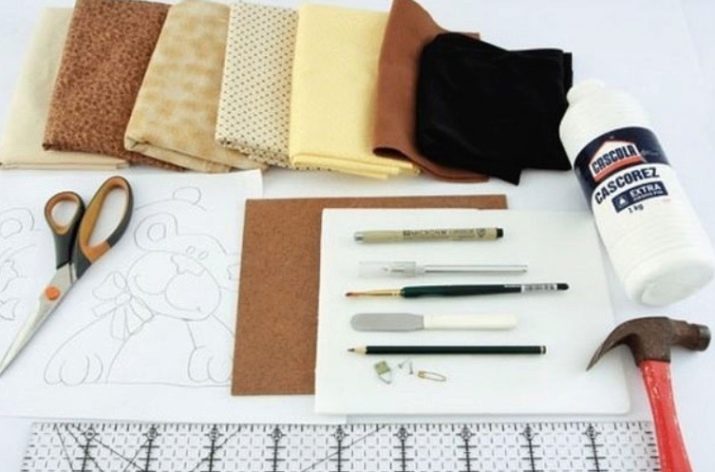
Creation technique
The kinusaiga technique is a combination of several types of applied craftsmanship:
- application;
- patchwork;
- mosaic;
- wood carving.
It follows from this that kinusaiga is a mosaic technique for making patchwork applications on a wooden base.
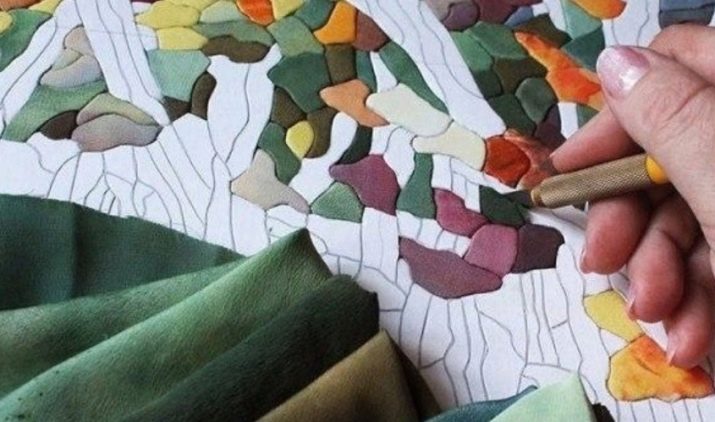
The technique itself consists of several steps. It is very important to follow their sequence. In no case should you rush, otherwise the prepared masterpiece will turn out to be sloppy.
- The first stage of creating a picture requires the selection of an appropriate picture. Some are suitable for the kitchen, others for the living room, and still others are preferable to hang in the bedroom. The outline of the selected image is transferred to a sheet of paper, and then to a wooden base.
- Second phase involves making cuts in a wooden or plastic base. The maximum groove depth should be no more than 3 mm.
- In the third stage work, it is necessary to paint the paper templates in a certain color. Further, they need to be numbered both on paper and on wood.
- Then, fabric scraps are cut out according to the intended shape of each mosaic element. The main thing is not to forget about the allowance. The main part of the fragment can be glued to the base with glue. To create voluminous pictures, a soft insert can be laid under each piece of fabric.
It is very important to choose the color scheme, otherwise you will not be able to make out what is shown in the picture.
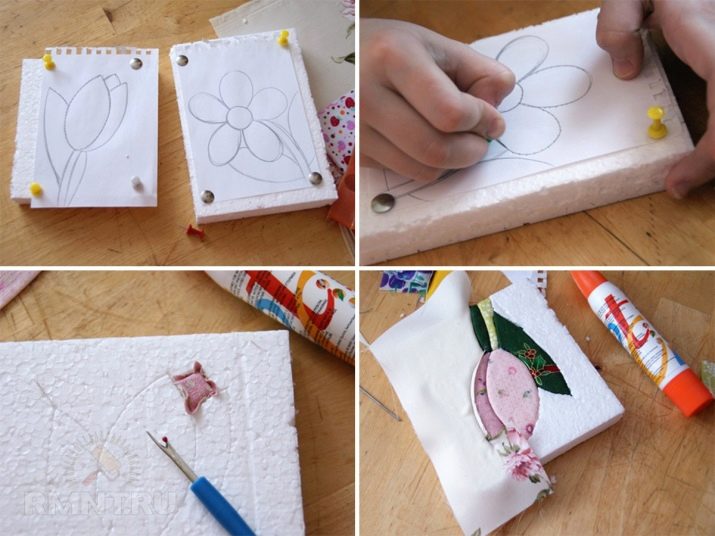
It is much more difficult to apply the kinusaiga technique in crafts. We'll have to make or acquire a form. For novice craftsmen, something simple is recommended, for example, a New Year's ball. And professionals can take on a complex model of a butterfly or a parrot. And the process of work itself requires more attention and concentration. It is necessary to measure each piece of fabric to a millimeter and only then cut it off and insert it into the base.
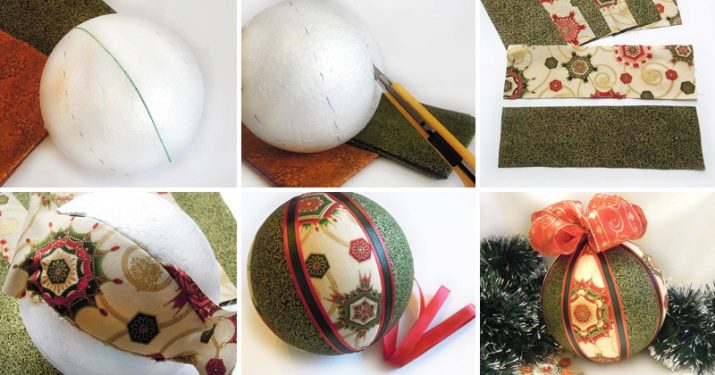
An important feature of kinusayga is the ability to involve children in the work. With them, you can create educational masterpieces, for example, on the topic of fire. The main thing is to preview a detailed master class and remember the sequence of the execution scheme.
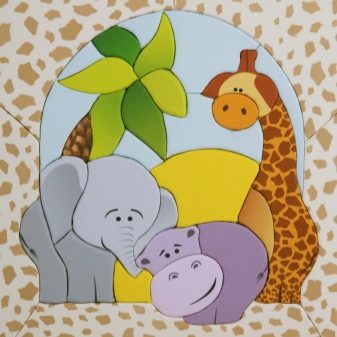

Paintings
After getting acquainted with the basics of creating works using the kinusaiga technique, you can consider a small master class. First of all, you need to prepare materials and tools:
- a sheet of polystyrene, at least 1 cm thick;
- pieces of fabric of different colors and textures;
- sharp scissors;
- clerical knife or scalpel;
- a stack or nail file;
- sketch;
- copy paper.
When selecting fabrics, thin, non-stretchable options should be considered. The cut edges should never peel off.
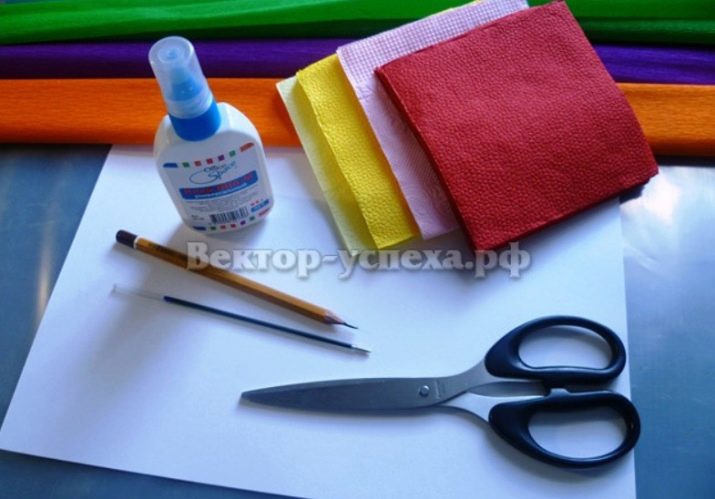
Having collected the working inventory, you can start creating a masterpiece.
- First you need to prepare a drawing. For primary work, you should not consider complex options with many small details. It is best to pay attention to light geometric patterns, from which it will turn out to make a nice composition.
- Then, using a sheet of carbon paper, the selected the sketch is transferred to the foam base.
- The next stage requires accuracy and utmost care. You need to take a scalpel or knife and cut the contours in the foam according to the copied sketch. The maximum slot depth should be 3 mm.
- Next, tissue flaps are taken. They must be cut in accordance with the dimensions of each appliqué element.
- Now take a nail file or stack... The edges of the fabric pieces to be overlaid are pushed into the prepared grooves.
- The whole picture is filled in a similar way.... It is very important that the outer parts of the flaps are tightly fixed in the slots.
- The edges of the foam base must be trimmed with a scalpel or utility knife to give it an even shape. The finished picture can be put in a purchased frame or you can make a frame edging with your own hands. It is enough to take a decorative satin ribbon and secure its extreme parts with pins. By the way, small buttons with gold or bronze plating look very laconic.
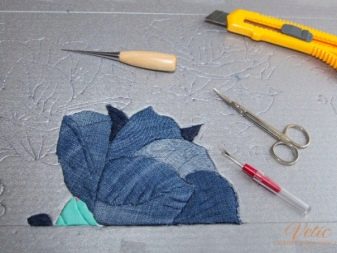
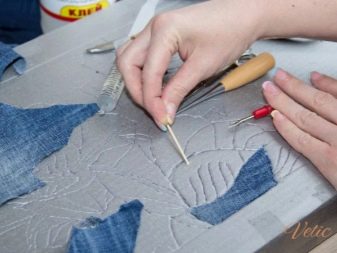
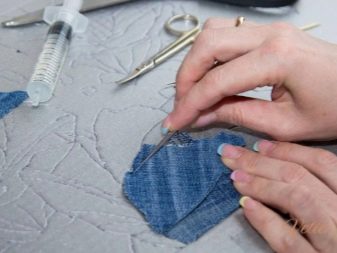

Crafts
The kinusaiga technique in the manufacture of volumetric crafts practically does not differ from the creation of flat paintings.
- First of all, you need to purchase a blank of the appropriate shape. For example, if the craft is being prepared for Easter, then it would be ideal to purchase an egg-shaped base.
- The required pattern is applied to its surface.... If the craft is being made for the first time, it is best to consider simpler images consisting of stripes and large geometric shapes. Grooves are made at the base of the contour.
- Next, the tissue scraps required for work are prepared. It is very important to measure their size and evaluate the color combination with each other.
- The first shred should be applied at the top of the egg.... For the convenience of work, the fabric piece must be fixed with a pin, and using a file, a stack or a spatula, tuck its tips into the created grooves.
- The rest of the mosaic elements are being worked out in a similar way.
Unfortunately, when drawing up bulky handicrafts, the fabric material can crawl out of the slots. To prevent this from happening, the craftsmen propose to supplement the grooves with a tape fixed with glue. When the adhesive is dry, you can decorate the craft with decorative elements, for example, beads.


Christmas balls are created in the same way. You can make sets of New Year's toys and give them to friends, family and friends. No one will remain indifferent, as they will understand that each individual toy is made by hand.

At first, when creating crafts using the kinusaiga technique, you should not choose complex drawings with an unusual pattern. Only after gaining experience, you can start more complex work.
Many parents, when creating paintings and crafts using the kinusaiga technique, involve young children aged 3 to 5 years in this activity. There is nothing surprising. This technique is not dangerous, on the contrary, it develops the child's fine motor skills, develops their imagination.

Examples of beautiful works
Today it is almost impossible to meet a person who goes to a bookstore to purchase literature on a particular creative technique. Some are not interested in needlework, others give their preference to the Internet, and in vain. No Internet resource can tell in detail about the creative direction you are interested in than a book.Shizuko Kuroha, the author of the book, thinks the same. “Japanese patchwork. Collections of exclusive author's models "... The book describes in detail how to make a masterpiece worthy of a professional out of an old piece of cloth. It also contains the secrets of famous masters of applied art, which are worth listening to.
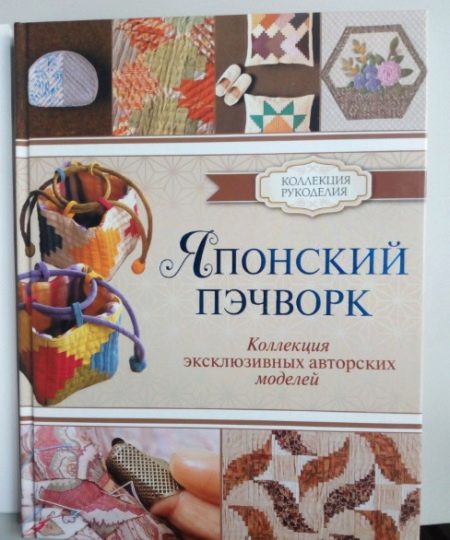
However, any brochure, books, magazines devoted to the kinusaiga technique say that it is necessary to start with light jobs.
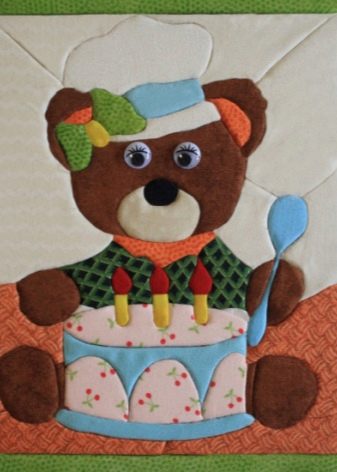
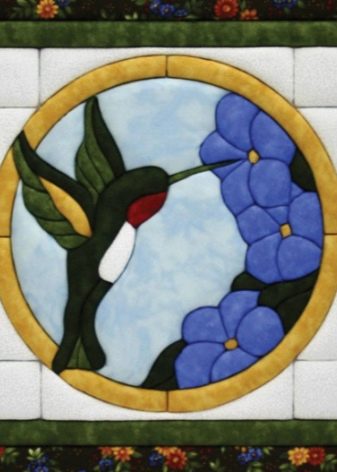
Having mastered the initial knowledge, you can proceed to more complex projects, for example, "The Lady in the Hat".
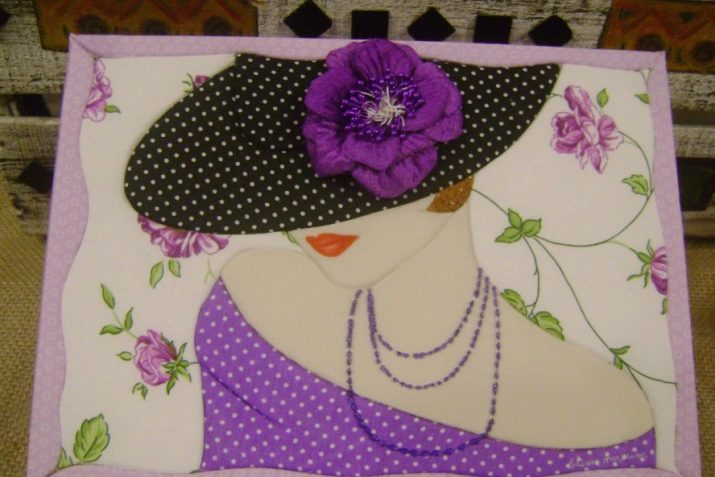
Having gained enough experience, you should try your hand at large, serious paintings.
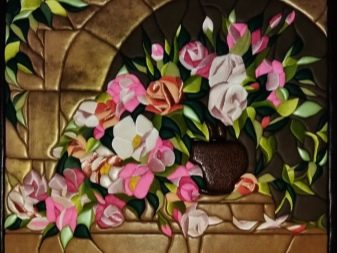
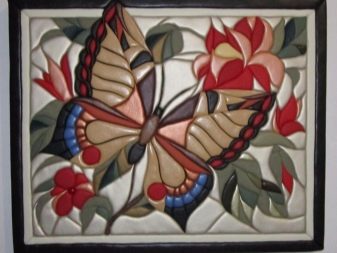
The following video presents a master class on creating a picture using the kinusaiga technique.









You can make a kinusaiga picture from a photo from your favorite anime series.